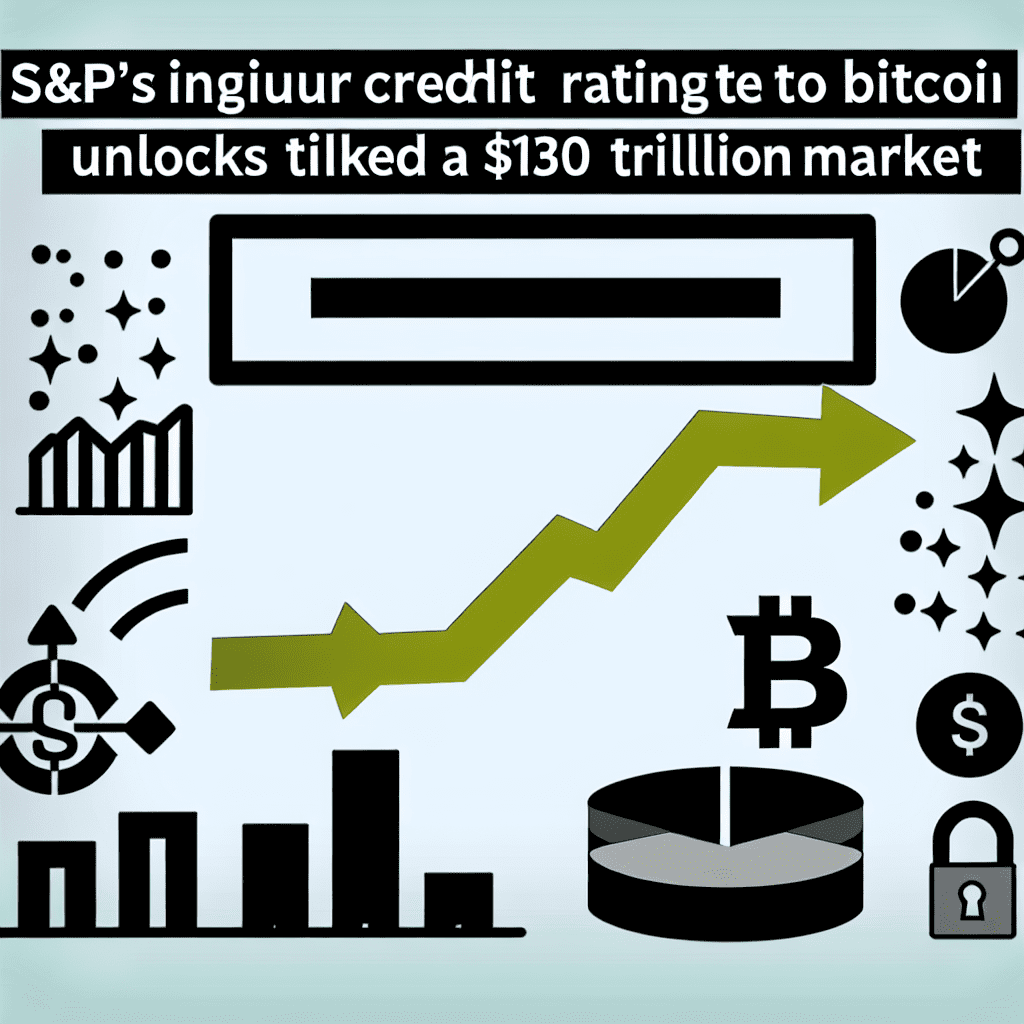A significant yet understated event has occurred, which could transform how conventional markets assess digital currencies like Bitcoin.
For the first time, a prominent global ratings organization has evaluated a company whose borrowing strategy is directly linked to BTC.
On October 27, S&P Global Ratings granted Strategy Inc. (MSTR) a “B-” rating with a Stable outlook.
Commenting on this, Mathew Sigel, head of digital asset research at VanEck, stated:
“That’s high-yield territory. Able to service debt for now, but vulnerable to shocks.”
Nonetheless, the rating acknowledges the company’s debt framework and Bitcoin’s role as valid collateral in the global credit landscape.
By doing so, S&P has placed Bitcoin within the same analytical framework as corporate debt, government bonds, and loans backed by commodities. This turns a previously theoretical idea into a rated financial reality.
Risk or Opportunity?
Simultaneously, S&P’s methodology regards Bitcoin mainly as a source of volatility rather than a capital asset.
The agency pointed out Strategy’s “heavy reliance on Bitcoin,” “thin capitalization,” and “fragile dollar liquidity” as justifications for its speculative-grade rating.
However, cryptocurrency analysts disagree, claiming that the model underestimates Bitcoin’s liquidity and structural robustness.
Unlike traditional corporate reserves, BTC can be instantly converted across borders and without banking intermediaries.
Jeff Park, chief investment officer at ProCap BTC, contended that S&P’s model undervalues Bitcoin’s liquidity and its independence from the banking sector.
As he noted:
“Treating Bitcoin as NEGATIVE capital ignores its incredible liquidity, independence from the financial system, and its extensive hedging attributes.”
Park further remarked that accounting and tax regulations are already adapting to this new reality. The Financial Accounting Standards Board’s ASC 820 rule now permits companies to value Bitcoin at fair market rates.
Additionally, US Treasury CAMT guidelines allow businesses to exclude unrealized gains or losses from minimum tax calculations.
He added:
“RAC is the last loner of the three governing bodies standing illogically orphaned.”
How does the rating impact Bitcoin?
Credit ratings serve as gatekeepers in global finance, influencing how $130 trillion in fixed-income capital, including pension funds, insurers, and sovereign wealth portfolios, manage risk.
Thus, any upgrade or downgrade by a single letter can redirect billions in capital flows within a short period.
Before this month, Bitcoin held no position in that ecosystem. Most regulated investors are barred from holding unclassified assets, leaving BTC exposure primarily to equities or ETFs.
However, S&P’s assessment of Michael Saylor’s Bitcoin-focused firm redefines that paradigm.
This reclassification creates a narrow yet significant avenue for this group of investors.
Institutional investors restrained by policy can now indirectly gain Bitcoin exposure via the rated debt of a Bitcoin-backed issuer.
While these funds may never directly hold BTC, they can possess bonds associated with it, thereby embedding Bitcoin into the frameworks of global credit.
If merely 1% of the world’s bond market were shifted toward Bitcoin-linked instruments, this could result in approximately $1.3 trillion in potential inflows—more than double Ethereum’s market cap and exceeding Mexico’s GDP.
Moreover, the implications go beyond Strategy’s borrowing costs.
The rating marks the first formal recognition of BTC within the credit hierarchy, indicating the asset’s entrance into the core of structured finance.
Consequently, three systemic effects are likely to occur:
- First, Bitcoin ascends the collateral ladder, aligning with gold and investment-grade bonds as acceptable security for loans and structured products.
- Second, institutional eligibility broadens—pension funds and credit entities can now justify exposure to BTC-backed instruments under existing regulatory frameworks.
- Third, regulatory integration progresses as rating methodologies inform Basel-aligned risk-weight frameworks, allowing Bitcoin exposure to be accurately quantified.
Collectively, these dynamics alter Bitcoin’s behavior. Rather than trading only on speculative forces, it begins to attract duration-based capital, which is yield-seeking money that stabilizes sovereign debt markets.
In this context, S&P’s ‘B-’ rating is less about Strategy’s solvency and more about Bitcoin’s acknowledged function as collateral. It symbolizes the point where volatility is expressed through yield spreads instead of sentiment.
As more rated issuers emerge, BTC will accumulate a credit history that agencies can assess and investors can evaluate.
In time, the first-ever “Bitcoin yield curve” might develop, allowing the asset to function as both digital gold and a measurable, rated component of the global credit system.


